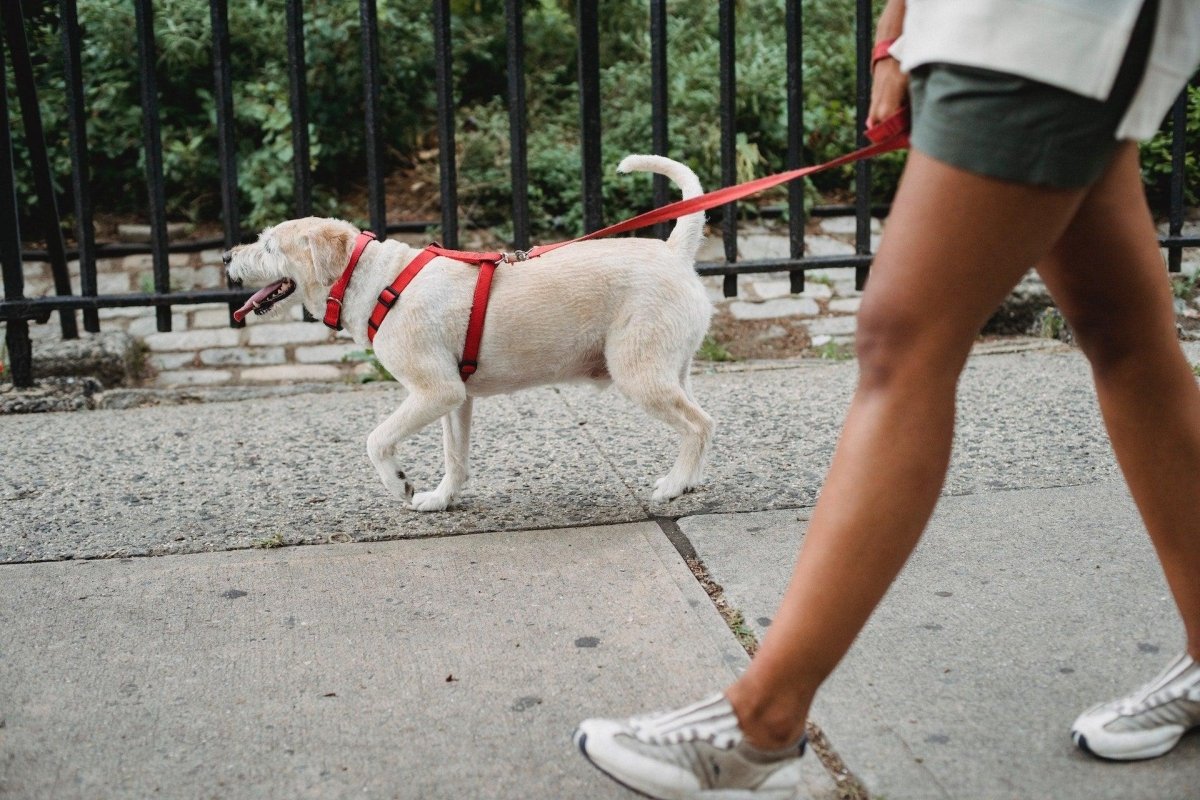Introduction
As a proud dog owner, you want to make sure your furry friend is comfortable and safe when you take them on walks. To do that, you'll need to decide whether to use a harness or a collar. Both options have their pros and cons, so it's important to consider which one is right for you and your dog. Let's get straight to it.

First, let's talk about dog collars. They are the most common option and for a good reason too. Collars are simple to use and can be easily adjusted to fit your dog's neck. They come in a wide range of materials, including nylon, leather, and even metal. Collars also offer a convenient place to attach your dog's ID tags and other essentials e.g. leads and bag dispensers. They can be used for basic training commands too.
However, collars can also have some downsides. If your dog is a strong puller or prone to lunging, a collar can put pressure on their neck and throat, potentially causing injury or discomfort. This is especially true for dogs with short snouts or necks, like bulldogs or pugs, who are more susceptible to breathing issues.

On the other hand, harnesses distribute pressure more evenly across your dog's body. Making them a great choice for dogs with respiratory problems or those who tend to pull. They also offer more control over your dog's movements and can be useful for training. Additionally, harnesses can provide added security, as they make it more difficult for your furry companion to slip out of their collar.
But, harnesses also have some drawbacks. They can sometimes be more complicated to put on and take off than collars and may require some adjusting to get the right fit. Harnesses also tend to be more expensive than collars and can come in a variety of styles. This can be overwhelming when choosing the right one for your dog.
Which Is Right for You?
So, which is right for you? It ultimately comes down to your individual dog's needs and behaviour. If your dog is well-behaved and doesn't pull, a collar may be a great option. But, if your dog is prone to pulling or has breathing issues, a harness is likely the better choice.
It's also important to note that some dogs may do well with both a collar and a harness, depending on the situation. For example, a collar may be more comfortable for your dog during short walks, while a harness may be necessary for longer walks or more rigorous activities.
Closing Thoughts
Dog collars and harnesses have pros and cons, and the right choice depends on your dog's needs and behaviour. By considering these factors and properly fitting the collar or harness, you can make sure your furry friend is comfortable and safe on all your adventures together.
And no matter which option you choose, make sure to properly fit the collar or harness to your companion. Ensuring their comfort and safety. And, it's best to supervise your dog when using either option to prevent any accidents or injuries.















Share:
Finding the Right Dog Lead
5 Common Mistakes Dog Owners Make and How to Avoid Them